Palm Bay, FL Pollen and Allergy Report for Summer 2023
Pollen Allergy Trends in Palm Bay, FL
When is pollen lowest in Palm Bay, FL?

May
Lowest month total PPM
Avg. PPM
When is pollen highest in Palm Bay, FL?

April
Highest month total PPM
Avg. PPM
How does pollen in Palm Bay, FL compare to Florida?
Palm Bay has a lower average PPM than the state of Florida.
Palm Bay yearly avg PPM:
Florida yearly avg PPM:
How does pollen in Palm Bay, FL compare to the USA?
Palm Bay has a higher average PPM than the USA.
Palm Bay yearly avg PPM:
USA yearly avg PPM:
Is pollen worse this year in Palm Bay, FL?
Spring 2023 was better than spring 2022.
Spring 2023 PPM:
Spring 2022 PPM:
Average PPM in Palm Bay, FL

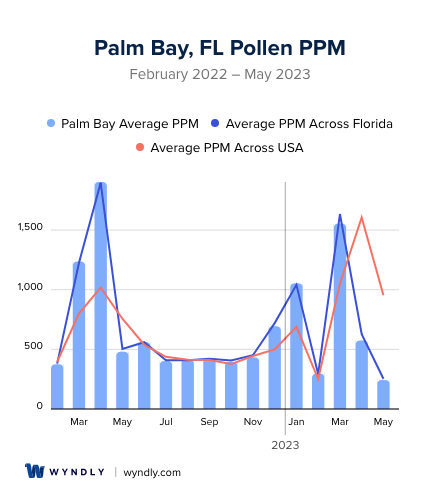
Palm Bay, FL Pollen and Allergy Breakdown by Month
Grass
When is grass pollen highest in Palm Bay, FL?
April has the highest grass pollen in Palm Bay, FL with an average PPM of
When is grass pollen lowest in Palm Bay, FL?
December has the lowest grass pollen in Palm Bay, FL with an average PPM of
Tree
When is tree pollen highest in Palm Bay, FL?
March has the highest tree pollen in Palm Bay, FL with an average PPM of
When is tree pollen lowest in Palm Bay, FL?
July has the lowest tree pollen in Palm Bay, FL with an average PPM of
Weed
When is weed pollen highest in Palm Bay, FL?
June has the highest weed pollen in Palm Bay, FL with an average PPM of
When is weed pollen lowest in Palm Bay, FL?
February has the lowest weed pollen in Palm Bay, FL with an average PPM of
Palm Bay, FL Pollen Monthly Breakdown by Pollen Type
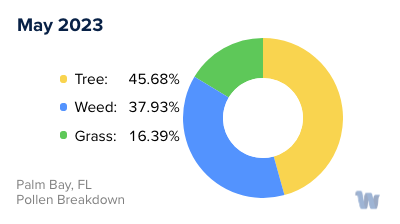
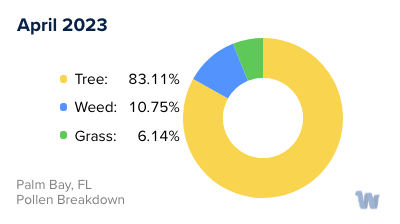

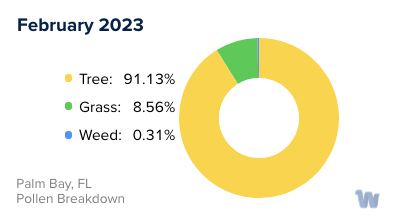
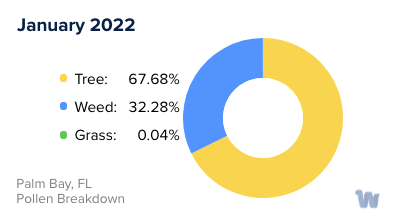
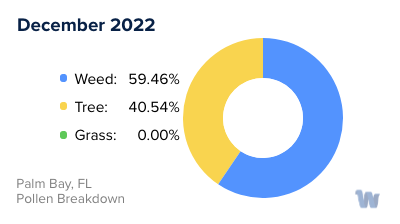
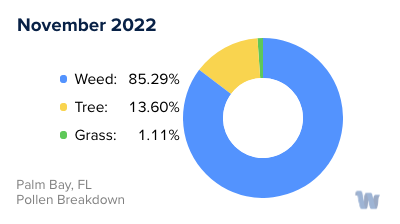

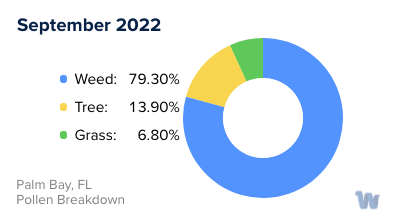
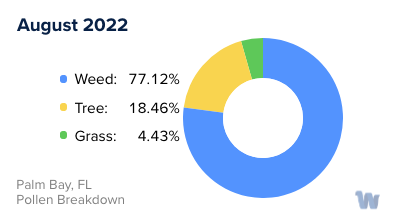

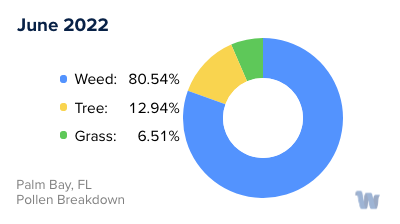
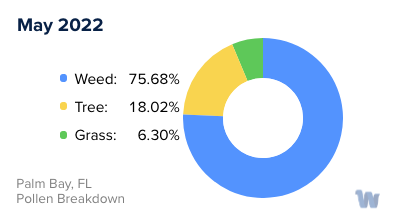

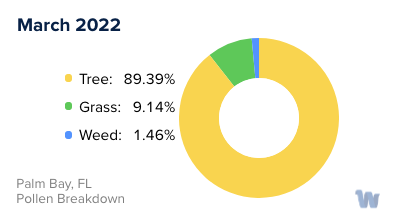
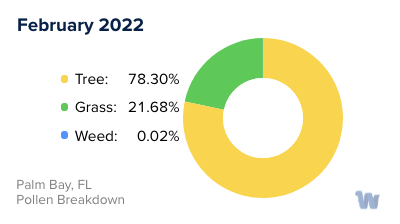
Pollen and Hay Fever in Palm Bay, FL
In the vibrant city of Palm Bay, Florida, where the natural landscape comes alive with a profusion of flora, residents and visitors alike often find themselves contending with pollen allergies and hay fever. These conditions are typically triggered by the pollens that certain plants release into the air, and in Palm Bay, they can be particularly prevalent due to the city's biodiversity.
Pollen allergies, also referred to as hay fever or allergic rhinitis, are essentially the body's immune system reacting to pollen grains as if they were harmful invaders. This reaction leads to the symptoms we commonly associate with allergies: sneezing, itchy eyes, and a runny or stuffy nose.
In Palm Bay, the types of pollen that most commonly trigger allergies are tree, grass, and weed pollen. Each has its own peak season, during which the plants release their pollen into the environment.
Tree pollen tends to peak in the spring. Many of Palm Bay's native trees, such as oak, pine, and cedar, are prolific pollen producers. When these trees bloom, they fill the air with microscopic pollen grains, which can cause allergies in sensitive individuals.
Grass pollen, on the other hand, usually reaches its highest levels in late spring and early summer. This category includes species like Bermuda grass, Timothy grass, and ryegrass, which are common in Palm Bay's residential and public green spaces.
Finally, weed pollen, from plants such as ragweed, sagebrush, and lamb's quarters, typically becomes a problem in late summer and fall. This is when these plants bloom and release their pollen into the environment.
Understanding the seasons and types of pollen can be a valuable tool in managing allergies. By knowing what to expect and when, individuals can better anticipate and prepare for these seasonal allergy triggers. However, it's important to note that pollen levels can vary from year to year, and even day to day, depending on a range of factors including weather conditions and local plant populations.


